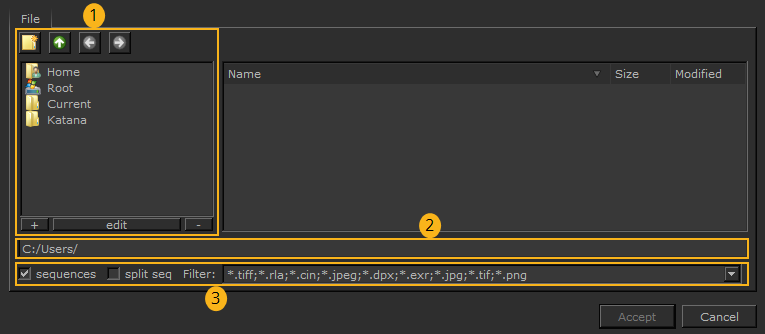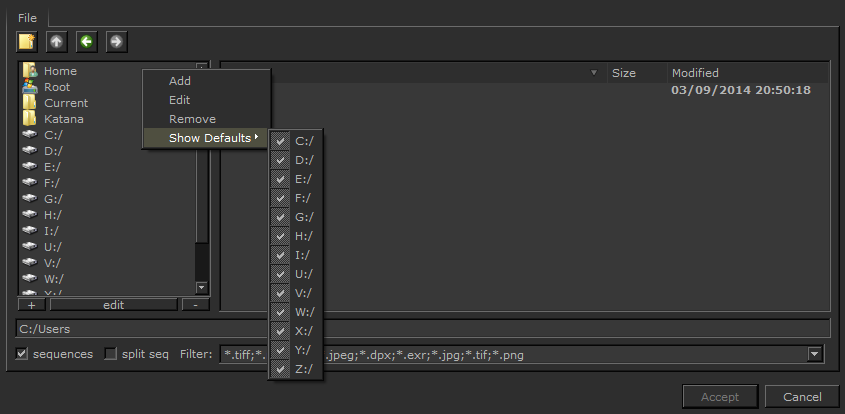Using the File Browser
The file browser is the basis for the File asset manager.

The following correspond to the numbers on the dialog image above:
| 1. | Navigation controls - let you move through the directory structure, bookmark favorite directories, and create new directory folders. |
| 2. | Path name field - displays the current directory path or enter a filepath to the file you want to open. |
| 3. | Filter menu - filter what files you can see in the file browser. |
Tip: Windows only: You can show/hide the drives that Windows auto-creates by right-clicking the directory list, selecting Show Defaults, and checking or unchecking the drive.

Navigation Controls
Use the following controls to navigate between directories:
• Click the Create New Directory button to create a new directory at your current position in the file hierarchy.
• Click the Up One Directory button to go up one directory closer to the root.
• Click the Previous Directory button to go back one directory.
• Click the Next Directory button to go forward one directory.
• Click the + button to add a directory bookmark.
• Click the edit button to edit the name or path name to a bookmark.
• Click the - button to remove a directory bookmark.
Path Name Field
The path name field allows you to do the following:
• Navigate to a directory by typing the path name in the field.
• Enter a script name by browsing to a directory path and entering the file name after the displayed path.
• Limit the file list to specific file types by using the Filter dropdown menu and sequences checkbox.
Filters and Sequences
To use the Filter dropdown menu and sequences checkbox:
• Select *.<file extension> to display all files of that extension type, for instance *.png.
• Select * to display all files (except hidden files), regardless of what they're associated with.
• Select .* * to display all files, including hidden files.
• Select */ to display directory names, but not their contents.
• Check sequences to display image sequences as single titles, as in fgelement.####.png 1-50 rather than fgelement.0001.png, fgelement.0002.png, and so on.
• Split incomplete sequences into separate sequences using the split seq checkbox.
Note: File sequences with no file extension, for example, fgelement.0001, fgelement.0002, and so on, are not displayed as single titles the first time you view the directory in the file browser. However, they are displayed as single titles once you have navigated to another directory and back again.
Select Multiple Files
To select multiple files with the file browser:
| 1. | Browse to the folder where the files are located. |
| 2. | Ctrl+click on all the files you want to open to select them. |
| 3. | Click Open. |
All the selected files open.
